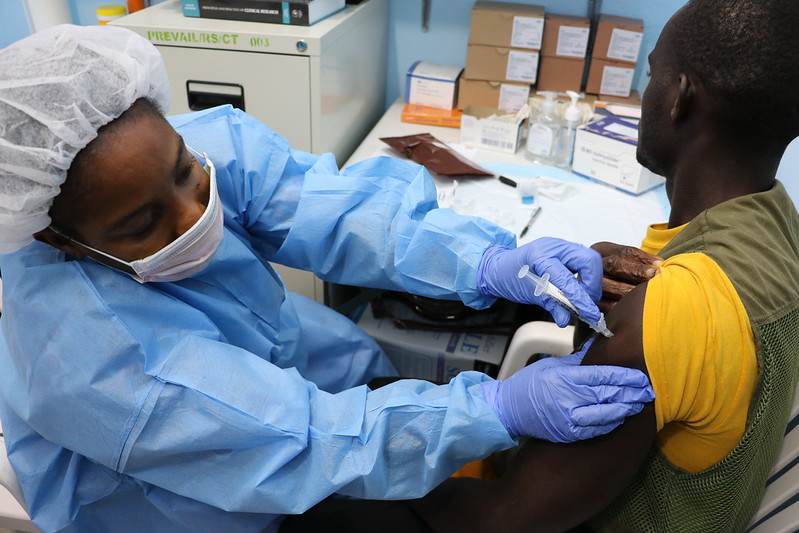Monkeypox Outbreak in Africa
 COVID-19 was a difficult time for everyone. Not only did we see extreme drawbacks in the economy, but drawbacks socially and personally as well. The world has worked hard to move on from a time of social isolation, and face masks, but a new problem has begun to arise that threatens the world’s plans for global stability. Monkeypox, now known as Mpox is a rare disease that leads to a rash and flu-like symptoms. There are two strains that affect a multitude of people at different rates and are contracted in various ways. Infected are commonly found in central African countries like the Democratic Republic of Congo (DRC), Uganda, and Rwanda. These countries are now facing high rates of spreading, stirring tensions and concerns of another global crisis and potential monkeypox outbreak.
COVID-19 was a difficult time for everyone. Not only did we see extreme drawbacks in the economy, but drawbacks socially and personally as well. The world has worked hard to move on from a time of social isolation, and face masks, but a new problem has begun to arise that threatens the world’s plans for global stability. Monkeypox, now known as Mpox is a rare disease that leads to a rash and flu-like symptoms. There are two strains that affect a multitude of people at different rates and are contracted in various ways. Infected are commonly found in central African countries like the Democratic Republic of Congo (DRC), Uganda, and Rwanda. These countries are now facing high rates of spreading, stirring tensions and concerns of another global crisis and potential monkeypox outbreak.
Countries at Risk
Mpox is causing major outbreak fears in the DRC, Uganda and Kenya as people are starting to experience an increase in cases. Mpox in the DRC has reached over 15,000 reported cases, as of August 2024, making it the largest concentration of infected on the continent, and surrounding countries are at risk. Kenya, Uganda, and Rwanda have now reported their first cases of monkeypox, and have begun taking necessary precautions to isolate the problem before more are infected.
The DRC and other countries are working hard to contain the threat; a mixture of existing economic setbacks and Mpox would be detrimental to the progress and stability Africa has worked hard to achieve. Mpox in the DRC is close to a total outbreak in the eastern provinces of South and North Kivu where millions of displaced people are living in overcrowded conditions, inevitably causing an immediate rise in cases.
Kwazulu Natal reported nine cases of Mpox and two confirmed deaths already in July 2024. Men between the ages of 17 through 43 were among the first groups to contract the disease in July 2024. Exposure can occur through contact with contaminated materials, infected animals or infected people, most notably through sexual contact. South Africa fears of growing community transmission in areas with high concentrations of vulnerable groups.
Monkeypox Outbreak: Solutions
Government organizations like UNICEF, WHO and the African CDC are working in partnerships to provide vaccines, services and information, and health kits to healthcare facilities across Africa. A collaboration with Gavi, the vaccine alliance has led to the approval of several projects aimed at containing and stopping Mpox in the DRC and other African countries.
Beginning in 2026, Gavi will start stockpiling vaccines, but progress will rely on funding, prequalification of a recommended vaccine and the availability of WHO Emergency Use Listing. Gavi will support outbreak response in DRC and surrounding countries in the meantime. The organization will invest in the learning agenda which aims to help inform and improve future vaccination efforts.
In 2022 the CDC Foundation activated the Emergency Response Fund, previously used to bolster support to communities and organizations when Ebola, Zika, and most recently COVID-19 threatened the world. Appealing with government and private entities the CDC aims to raise as much support as possible, the first of many donations coming from the Robert Wood Johnson Foundation.
Going through the COVID-19 pandemic, the world gained an experience. Support in awareness and advocacy of the problem that the monkeypox outbreak poses is necessary for low-income countries to receive help. The world has the chance to stop another pandemic from taking shape.
– Immanuel Wiggins
Immanuel is based in Jackson, MS, US and focuses on Global Health for The Borgen Project.
Photo: Flickr
